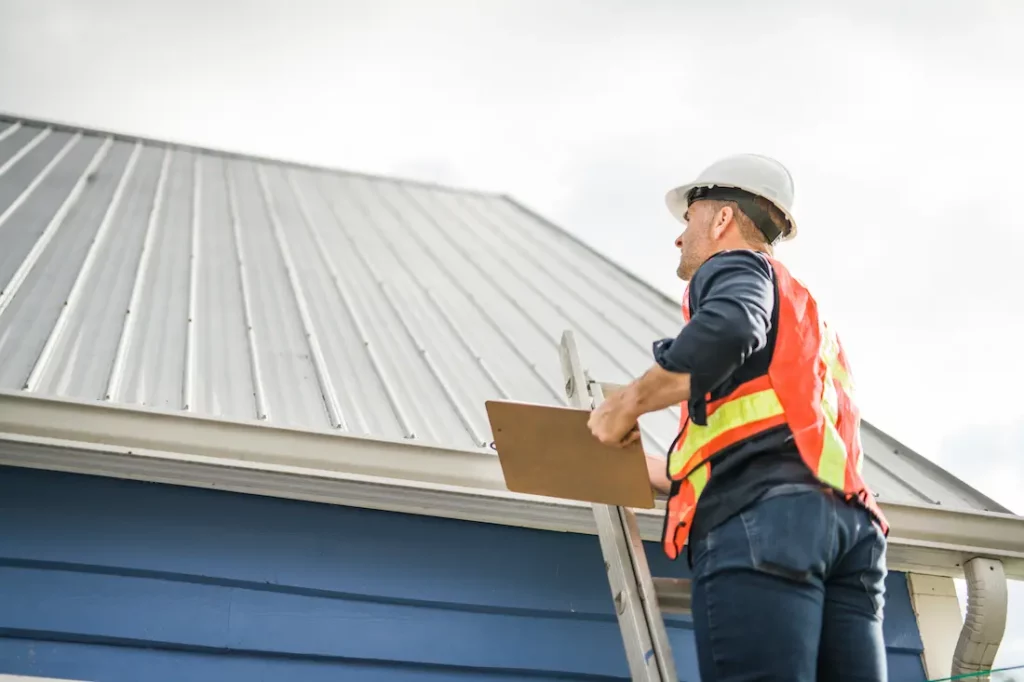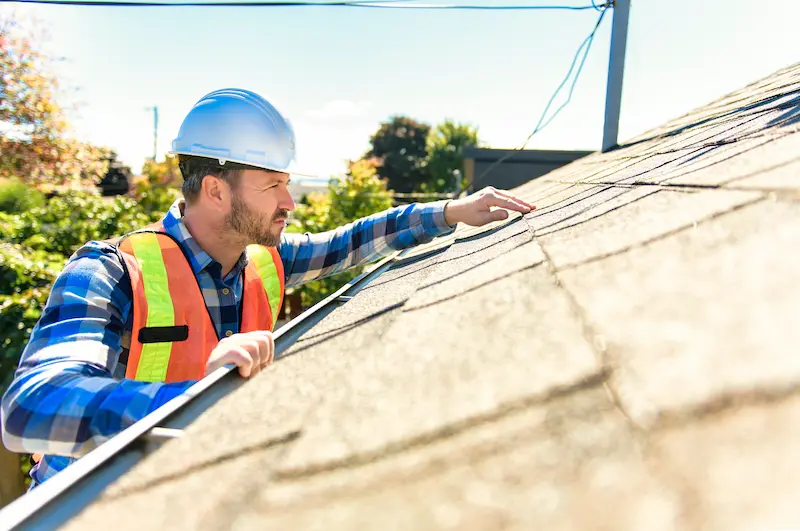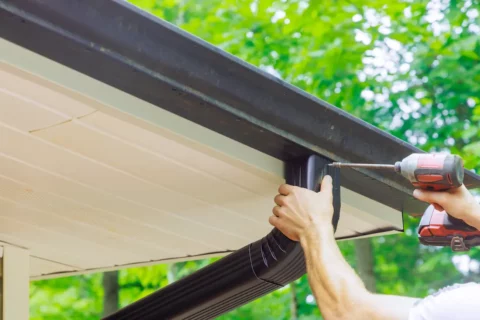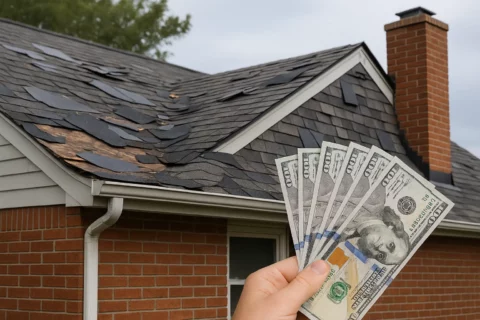
What Home Inspectors Look for During a Roof Evaluation
When you’re working with a trusted roofing partner like 303 Roofer in Denver, Colorado, one of the best questions you can ask is: What does a home inspector actually look for when evaluating a roof? As a residential and commercial roofing installation and repair company, we know that a solid roof underpins everything else: your comfort, your safety, the value of your property. And when the inspection happens, whether you’re buying, selling, or just maintaining your home, the roof is one of the major systems under scrutiny.
In this guide, we’ll walk through in detail what home inspectors focus on during a roof evaluation, why each item matters, how the unique climate and conditions around Denver affect things, and how you, as a homeowner or property manager, can partner with a firm like 303 Roofer to stay ahead of potential issues. The tone here is educational: we aim to establish authority, share factual information, and avoid jargon and fluff.
1. Why the Roof Matters in a Home Inspection
Before diving into specifics, let’s align on why a roof gets attention in a home inspection.
A roof is the primary barrier between your home’s interior and the elements. In Denver, with its range of weather, from intense sun to snow, hail, wind, freeze‑thaw cycles, your roof takes a beating. When a home inspector walks in (or up), they’re looking for weak spots that could lead to leaks, energy inefficiency, structural damage, or worse. As stated by professional inspection sources, “A roof inspector’s checklist will examine every component of a roof, including its structural support, the stability of the roofing material, and if there are any signs of damage.”
Additionally, inspection guidelines from the International Association of Certified Home Inspectors (InterNACHI) clearly outline that components such as roof coverings, ventilation, flashing, and attic areas are crucial aspects of a roof inspection.
For anyone working with Denver roofing companies like ours, knowing what the inspector will look for gives you a head start in maintaining, documenting, or planning for needed repairs.
2. Key Exterior Items Inspectors Check on the Roof Surface
When the inspection turns to the outside roof surface and its components, inspectors go through a systematic list. Here are the major exterior items, with focus and relevance for a Denver property.
a) Roofing Material Condition
Inspectors examine the condition of shingles, tiles, metal panels, or any other roofing materials used on your roof. They’ll look for things like blistered, curled, split, or missing shingles; granule loss in asphalt shingles; rust or corrosion in metal roofing.
In Denver, sun‑exposure UV, hail (yes, hail can be severe here), and snow load cycles can accelerate wear. The inspector will pay attention to evidence of material fatigue, such as shingles losing granules (which protect the underlying layers from the sun) or metal panels showing signs of corrosion.
b) Flashing, Penetrations, Edges
Areas around chimneys, skylights, vent pipes, valleys, and wall intersections are always weaker. The flashing (metal strips that seal transitions) and penetration boots (around vent pipes) are common failure points.
For Denver homes, shifting from freeze‑thaw and the occasional heavy snow load can cause flashing to pull loose, cause seals to crack, or allow water intrusion during melt cycles. Inspectors will carefully examine the step flashing, counter flashing, drip edge, and boot seals.
c) Gutters, Downspouts, Drainage & Overhangs
Although these aren’t strictly roofing materials, improper drainage can compromise the roof system. When gutters are clogged or misaligned, water can back up onto the roof edge, get under shingles, or damage fascia/soffit.
In Denver, consider the potential for rapid snowmelt or spring rainstorms: ensuring the water is directed away from the roof structure is crucial. Inspectors will note sagging gutters, missing downspouts, debris accumulation, and improper overhangs.
d) Decking, Sag, and Structural Indicators
From the outside roof surface, an inspector will look for visible sagging, uneven rooflines, or indications that the roof deck (the substrate under shingles) may be compromised. According to Angi, “this will check how well the overall roof system is holding up and look for signs that point toward a sagging roof, including: cracked, splintered, or rotted rafters or trusses…”
For Denver homes, if snow has accumulated for extended periods or if ice dams form due to improper insulation/ventilation, the decking may suffer unseen damage. Early detection is crucial.
e) Ventilation and Attic Components (Exterior as visible)
On the exterior inspection, you’ll also see intake vents, ridge vents, soffit openings, and attic louvers. If these are blocked, improperly installed, or missing, they contribute to moisture buildup, early shingle wear, and ice dam formation. Good inspectors will review these when on/near the roof surface.
In Denver’s high-altitude climate, proper attic ventilation helps prevent thermal stress on the roof and reduces the risk of ice damming when snow accumulates and undergoes melting/refreezing cycles.
3. Interior & Attic Inspection Elements
A complete roof evaluation doesn’t stop at what you see from the outside. Many of the most serious issues begin inside the attic, often remaining hidden until they manifest as damage.
a) Signs of Leaks or Water Intrusion
Inspectors will enter the attic and look for water stains on the underside of the roof deck, wet insulation, warped sheathing, daylight coming through the roof boards, and mold or mildew on wood surfaces.
For a Denver property, snowmelt and ice dams pose a significant threat: if the roof deck is warm above and the outside is cold, melting snow can run under shingles and refreeze at the edges, resulting in water intrusion. Noticing moisture inside the attic often indicates a roof problem that needs to be addressed.
b) Ventilation & Insulation Performance
Two of the most significant contributors to roof problems in the long run are inadequate ventilation and insulation. Proper airflow in the attic prevents excess heat and moisture, which in turn protects the roof’s structure and materials. Inspectors will verify that soffit vents are open, that ridge vents are functioning correctly, that insulation is adequate, and that there are no signs of heat or moisture damage.
In Denver’s seasonal shifts, having a roof that traps heat in the summer or fails to vent snowmelt properly can create problems. A good inspection will flag these.
c) Structural Inspection of Rafters/Trusses and Decking
While inspecting the attic, home inspectors will evaluate the framing: Are there cracked or split rafters? Are there signs of sagging between supports? Any rot or pest damage? These structural reviews matter because a roof is only as good as the system underneath.
d) Sheathing/Duckboards & Exterior Light Intrusion
Daylight or water dripping in the attic often means there’s a hole, gap, or failed flashing. This is often overlooked by homeowners but caught by inspectors. The underside of the sheathing will be checked for brown stains, rust marks (from nails/leaks), or warped boards.
Again, in Denver, repeated freeze/thaw cycles can cause sheathing expansion and contraction, so inspectors pay attention to these signs.

Location‑Specific Considerations for Denver Roof Inspections
Because we’re in Denver, a few unique factors influence what the home inspector will pay extra attention to, as well as what a homeowner or property manager should keep in mind.
a) Hail and Wind Damage
Denver and the surrounding areas get hailstorms. An inspector will look for hail impact marks on shingles, granule loss, bruising of shingles, dented metal flashings, or displaced shingles. Hail can significantly shorten roof life even if it’s not immediately apparent. While general home inspection checklists don’t always call out hail specifically, any damage to roofing material counts as “signs of damage.”
b) Snow Load and Ice Dam Formation
Heavy snow or prolonged snow cover, combined with sun exposure and attic heat, can lead to the formation of ice dams at the eaves. Ice dams can trap moisture under shingles, leading to leaks. Inspectors will look for signs of previous ice dams, including connected icicle formation, a missing drip edge, damaged eaves, or stained attic areas. Proper ventilation and insulation matter even more in this climate.
c) UV and Altitude Stress
Denver’s altitude results in more substantial UV exposure and more extreme temperature swings between day and night, which can stress roofing materials. Inspectors may note granule loss, cracked shingles, or accelerated wear. And tear Maintenance is more important here than in milder climates.
d) Seasonal Shift, Wind Gusts
Sudden spring or fall wind gusts may lift shingles, loosen flashing, or cause damage to the roof surface from debris. So the inspector may check for lifted flashings, popped nails, or debris in valleys. Inspection checklists note loose or exposed nails, as well as improperly seated nails.
What Home Inspectors Don’t Do (and Why That Matters)
Knowing what an inspector won’t do helps you avoid surprises and understand when you need a specialist, like a roofing contractor. Here are the key limitations.
a) Inspectors Aren’t Required to Walk Every Roof
According to AHIT (American Home Inspectors Training), Home inspectors don’t have to walk on roofs. If it’s unsafe (due to a steep pitch, wetness, or snow cover), they may inspect it from the ground or a ladder.
That means some flaws may be missed unless a roofing specialist does a dedicated roofing evaluation.
b) Inspectors Don’t Guarantee Life Expectancy or Code Compliance
Most home inspection standards do not guarantee the lifespan of a roof or ensure it exactly meets local building codes (especially newer codes). They are describing the condition as seen.
c) Inspectors May Recommend a Specialist
If home inspectors find indications of serious roofing problems (hidden leaks, structural issues, complex flashing problems), they’ll likely recommend a complete roofing inspection by a specialist. As noted: “A home inspection might reveal obvious trouble about your roof… but won’t give you an idea of every single problem the roof might have.”
For clients in Denver, working with a dedicated roofing company like 303 Roofer can fill that specialist role and provide a more comprehensive diagnosis.
How to Prepare Your Roof for a Home Inspection
Since you already know what the inspector will look for, you can take steps to be prepared and achieve the best outcome.
Checklist for Homeowners and Property Managers in Denver
- Clear debris from gutters and downspouts to ensure unobstructed drainage.
- Remove heavy snow or ice buildup if it’s safe to do so, or plan to have a qualified contractor remove it.
- Walk the roof (if safe) or hire a roofing inspection to identify lifted shingles, damaged flashing, missing granules, or exposed nails.
- Inspect the attic for daylight, water stains, mold/mildew, insulation condition, and ventilation blockages.
- Document photos of any damaged spots so you can provide them to the inspector (or later to your roofer).
- Get a roofing professional involved if you suspect hail damage, storm damage, or prior repairs you’re unaware of.
- For commercial roofs (because we also work on commercial projects), check for ponding water, blisters in the membrane, loose mechanical penetrations, and damage to the roof edge.
By being proactive, you can minimize surprises in the inspection report and better inform your budgeting or negotiation.
Why Partnering with 303 Roofer Matters
At 303 Roofer, we serve both residential and commercial clients throughout Denver, Colorado. Here’s how we align with the inspection process and go further:
- We understand the local climate and its impact on roofing materials in the Denver metro area, including hail, snow, UV, and wind. As a result, our evaluations often identify issues that inspectors overlook, and we take the necessary steps to repair or replace them as needed.
- We’re familiar with the inspection checklists used by home inspectors, so when we intervene beforehand, we help you avoid big red flags on the report.
- If the home inspector identifies issues, we can step in with a detailed quote, an explanation of the root cause, and a cost-effective solution.
- For commercial clients, we bring experience with flat membranes, low‑slope roofs, and rooftop equipment, which inspectors may note but not fully evaluate.
- We work to ensure your roofing system supports the longevity and value of your property, not just correct obvious defects.
Frequently Asked Questions (FAQs)
How Often Should A Roof Be Evaluated Or Inspected?
According to multiple sources, a visual inspection (by an expert) should happen at least once a year, and especially after major storms or heavy snow seasons. In Denver, given the seasonal shifts, a twice-yearly check (spring and fall) makes sense.
If A Home Inspector Finds No Major Issues, Does That Guarantee The Roof Is Fine?
No, as noted earlier, home inspections may miss hidden conditions (such as under-deck moisture, roofing under-layer damage, or inadequate ventilation), and they may not inspect the roof. So even a clean report doesn’t guarantee everything is perfect.
What Is The Cost Of A Roof Inspection?
It varies. General home inspections may cost a few hundred dollars. Dedicated roofing inspections can be more expensive, depending on the complexity of the roof, accessibility, and technologies used (such as infrared imaging and drones).
What Should I Ask My Roofing Company After The Inspection?
What issues did you find? Is there evidence of damage consistent with storm/hail/snow? What is the remaining life of the materials? What repairs are urgent vs. good‑to‑do? What preventive steps should we take now? And what warranties, quality of materials, and workmanship can you offer? At 303Roofer, we’ll walk you through all of this and ensure you understand.
Summary: What Home Inspectors Prioritize
To wrap it up, when a home inspector evaluates a roof, their primary focus areas are:
- The condition of roofing materials (shingles, tiles, metal panels)
- Flashing and penetrations (chimneys, skylights, vents)
- Roof structure, decking, sagging, or deformation
- Drainage systems (gutters, downspouts, valleys)
- Attic interior conditions (moisture, ventilation, insulation, structural framing)
- Signs of water intrusion or damage (visual stains, mold, daylight entry)
- Roof ventilation, attic airflow, proper eaves/soffit/ridge vent function
- Local climate‑related stressors (hail, snow loads, UV, wind) and their impact
Understanding these helps homeowners in Denver more than just passively waiting for the report; you can proactively partner with Denver roofing companies, including 303 Roofer, to maintain roof health, avoid surprises, and stay ahead of costly major repairs.

Let’s Keep Your Roof Inspection‑Ready
If you’re in the Denver area and want your roof inspected, maintained, or repaired, don’t wait until that home inspection report flags something urgent. At 303 Roofer, we’re ready to help you prepare, evaluate, and act, whether you’re a homeowner, commercial property manager, or preparing to sell. Visit us at https://303roofer.com and let’s schedule your professional roof inspection. Protect your investment, stay ahead of weather stressors, and rest easy under a roof that’s been inspected and maintained by trusted Denver roofing professionals.



